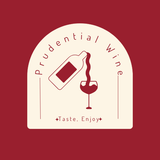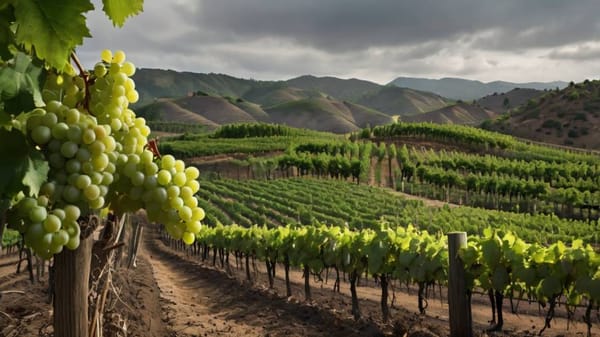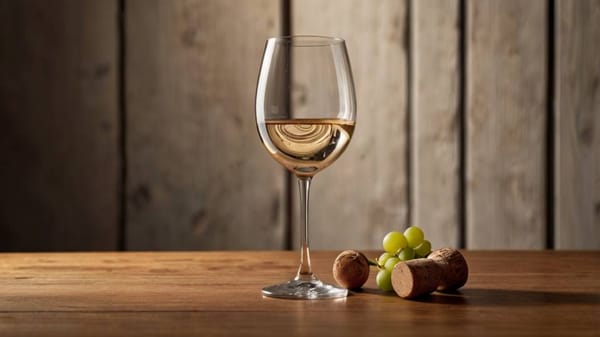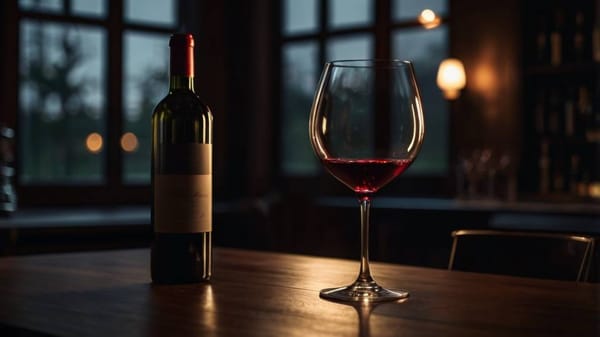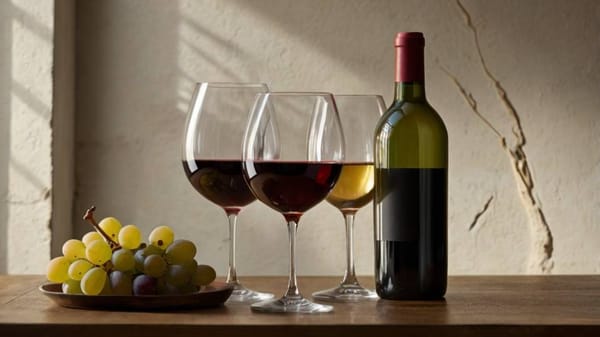How to Develop Your Own Tasting Ritual
Want to taste wine with more clarity and confidence? Learn how to create a personal ritual that sharpens your senses and deepens enjoyment.
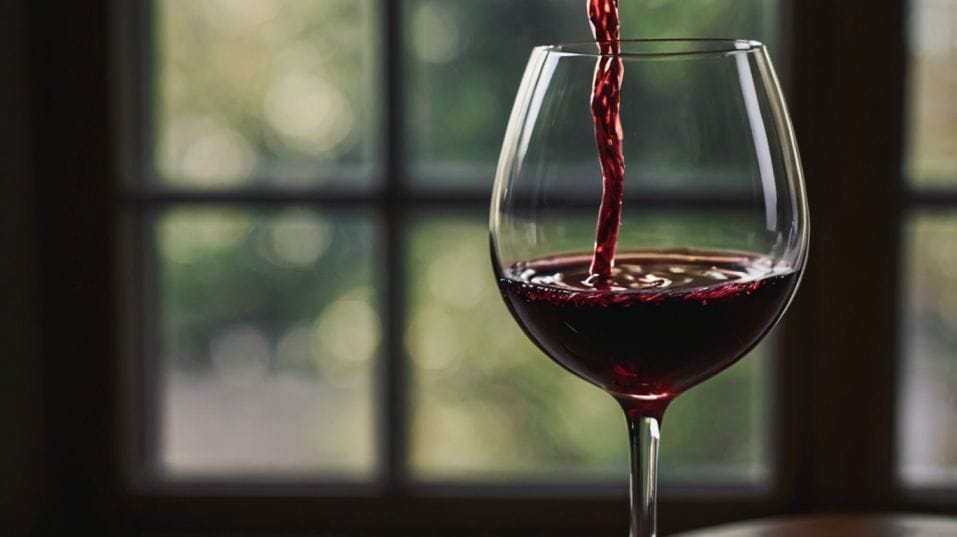
What if tasting wine could unlock more than flavor—what if it could sharpen your senses, calm your mind, and boost your confidence?
Whether you’re just getting curious or ready to dig deeper, developing a personal tasting ritual helps you connect with every bottle in a new way.
No memorization. No performance. Just a simple, focused process that turns wine into something richer, more vivid—and entirely your own.
Set the Scene
You don’t need a tasting room or expensive gear. What matters most is attention. Start with a clean glass—not just rinsed, but free of detergent residue, which dulls aroma.
Natural light helps, especially early on, when you’re learning to judge color and clarity. A neutral background, like a white table or napkin, will do more for your perception than you might expect.
Limit distractions. No blaring music, no strong kitchen smells competing for your focus. That doesn’t mean this has to be a silent ritual. It just means your senses need a little room to stretch.
Open the bottle thoughtfully. Whether it’s a twist cap or a wax-sealed cork, this moment is part of the experience. Listen to the pop or the glide.
Pour modestly—just a couple of ounces—and give the wine a few minutes in the glass. Oxygen is your first tool. Even young wines benefit from it. Let the wine open as you do.
Train Your Eye
Start with the visual. Color offers an immediate sense of what you’re dealing with, from grape variety to age to structure. Hold the glass at an angle against a white surface. Don’t rush.
A pale, translucent white might suggest cool climate freshness; a deep golden hue could hint at skin contact or oak. Red wines tell similar stories—bright ruby tones often mean youth, while brick or garnet edges suggest age or oxidation.
Is the wine cloudy? Is it brilliant? These aren’t judgments, just observations. The more you see, the more you recognize. Eventually, you’ll start noticing patterns without trying.
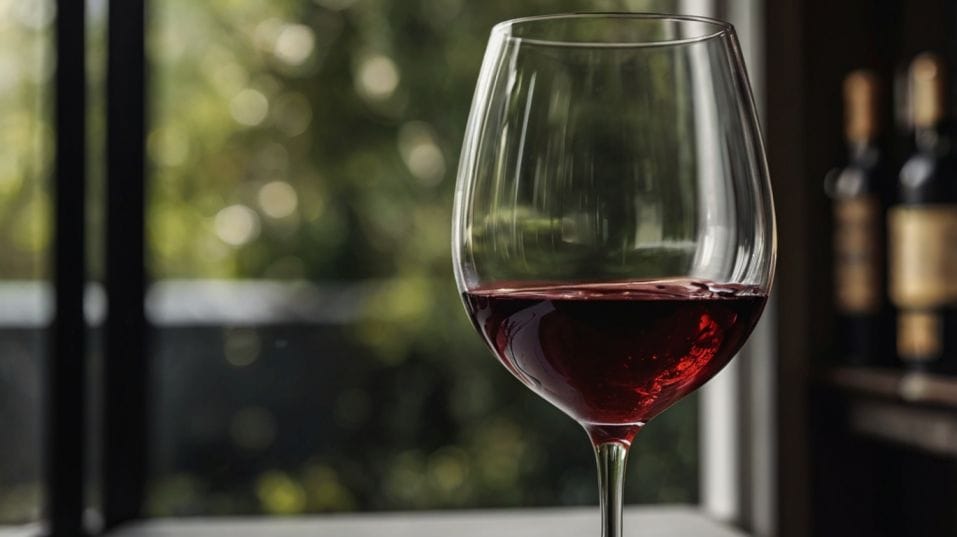
Tune into Aroma
Smell is the heart of tasting. It’s where wine becomes emotional, evocative, complex. Swirl the glass gently, enough to release aromatic compounds. Then get your nose in—not above the rim, but fully engaged.
Learn to Read Aromatic Layers
Your first sniff will usually give you the primary aromas: fruit, floral notes, herbs. Take a second pass.
Now you might notice secondary aromas—those that come from fermentation, like bread dough in sparkling wines or a slight yeasty note in natural whites. Tertiary aromas, like leather, tobacco, or dried fruit, develop with age.
But don’t get hung up on naming exact scents. This isn’t a test. It’s about noticing change and range. One day a wine might smell like cherries and pencil shavings.
Another day, it’s mushrooms and forest floor. What matters is that you’re present enough to catch it.
Taste with Purpose
Now sip. Not too much. Let the wine sit on your tongue. Move it around. You’re not just tasting flavor—you’re gauging texture, structure, energy.
Follow the Wine’s Progression
What’s the first impression? Sweetness? Bright acidity? A mouth-drying grip of tannin? These aren’t separate elements; they interact, forming a balance—or imbalance—that shapes the wine’s personality.
Pay attention to the middle. That’s where many wines evolve. The fruit might fall away and leave a bitter edge, or a smoky note might surface. The best wines offer a sense of movement. They don’t just taste like one thing. They build.
Swallow, or don’t. But always notice the finish. How long does the flavor linger? What’s left behind—a clean minerality, a floral echo, a roughness? This is where great wines tend to separate themselves.
Over time, you’ll start building reference points: what tension feels like in a Riesling, how richness plays out in a Chardonnay, why certain Syrahs seem to hum with energy. These aren’t abstract ideas—they’re muscle memory.
Use Language Wisely
You don’t need a vast tasting vocabulary to be a great taster. In fact, too many adjectives can cloud clarity. Start by speaking plainly. Does the wine feel fresh or flat? Silky or coarse? Is it fruit-driven or earthy? Clean or wild?
As you grow more confident, start naming specific notes—but keep them grounded. If a Cabernet reminds you of green bell pepper, say so.
If a pét-nat smells like bruised apple and wheatgrass, that’s useful. These references help solidify your impressions and make your tasting experiences easier to recall and compare.
If you’re tasting with others, share your thoughts early. Don’t wait to be influenced. The act of saying what you notice—out loud—strengthens your sense memory.
Document What Matters
You don’t need to record every detail of every wine. But keeping notes on the ones that move you will change how you taste.
It helps you see your own patterns: the styles you return to, the outliers that caught you off guard, the bottles that didn’t deliver.
Avoid scoring. Instead, ask questions. What did I like? What surprised me? Would I buy it again? Would I serve it to someone else?
You can jot this down in a small notebook, a spreadsheet, or a wine app—whatever helps you stay consistent. The important part is reflection. The more you reflect, the more intentional your next glass becomes.
Expand Your Context
Wine doesn’t exist in a vacuum. It’s part of culture, geography, weather, and history. You don’t need to memorize appellation laws, but understanding where a wine comes from deepens the experience.
Read labels with attention. Look up the region. Learn what grapes grow best there, and why. Over time, you’ll begin to connect climate to structure, soil to flavor, tradition to technique.
You’ll understand why a cool-climate Pinot tastes nervy and sharp, while one from a warmer region leans plush and jammy.
This context empowers you. It helps you choose wines more confidently, understand value more clearly, and approach unfamiliar bottles with interest instead of hesitation.
Final Thoughts
Your tasting ritual is yours to shape. It’s not about copying sommeliers or chasing prestige. It’s about slowing down, noticing more, and tasting with both intellect and instinct.
The more intentional you become, the more fluent your palate grows. You start to trust your senses. You stop second-guessing your preferences.
So tonight, pour something with purpose. Try a wine from a place you’ve never tasted. Revisit a style you thought you didn’t like. Invite someone into the ritual. Or enjoy it solo, with no noise except the sound of the cork and your own attention.
Every great taster starts somewhere. Start here. Start now. Taste with focus. Taste with joy. Taste like it matters.
